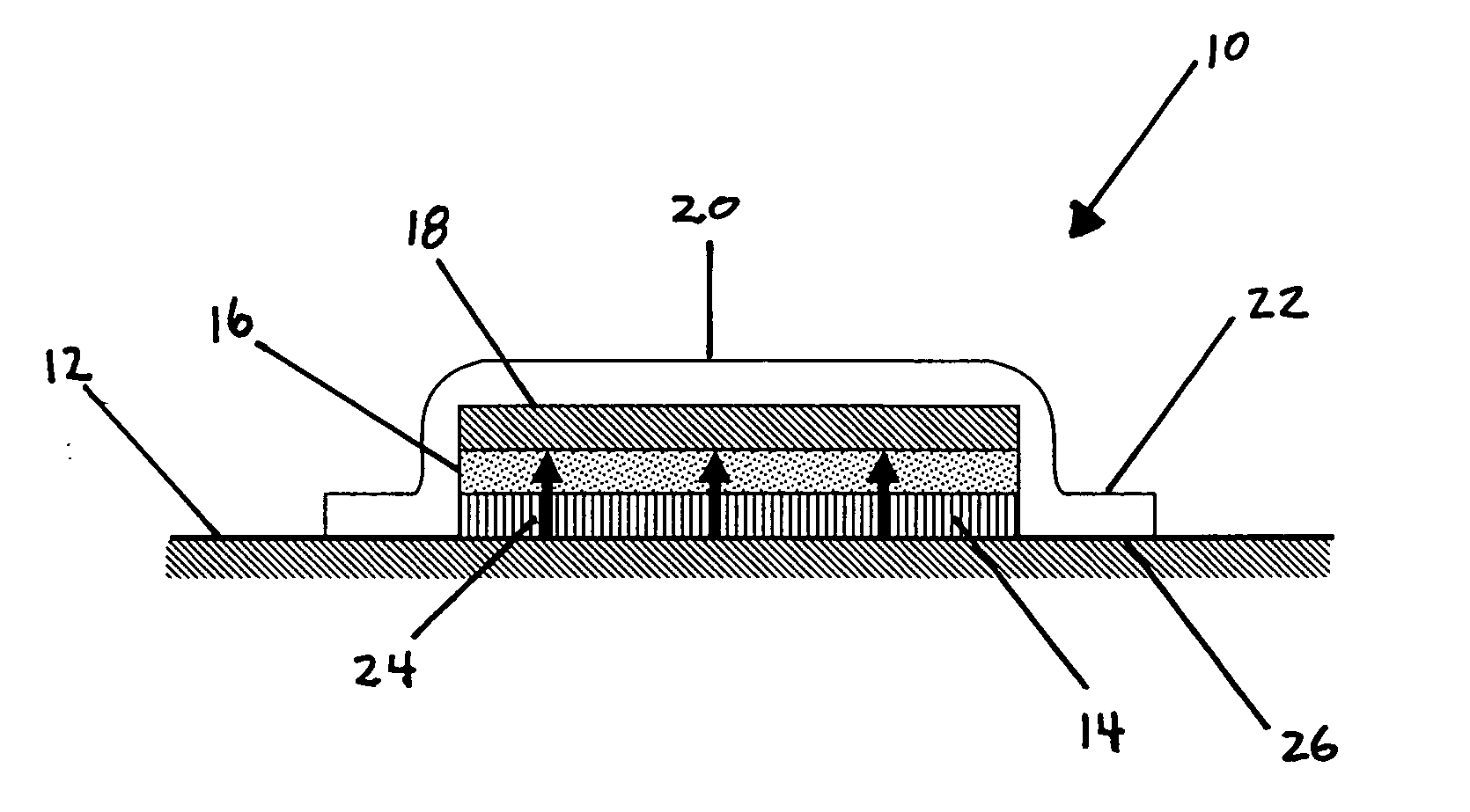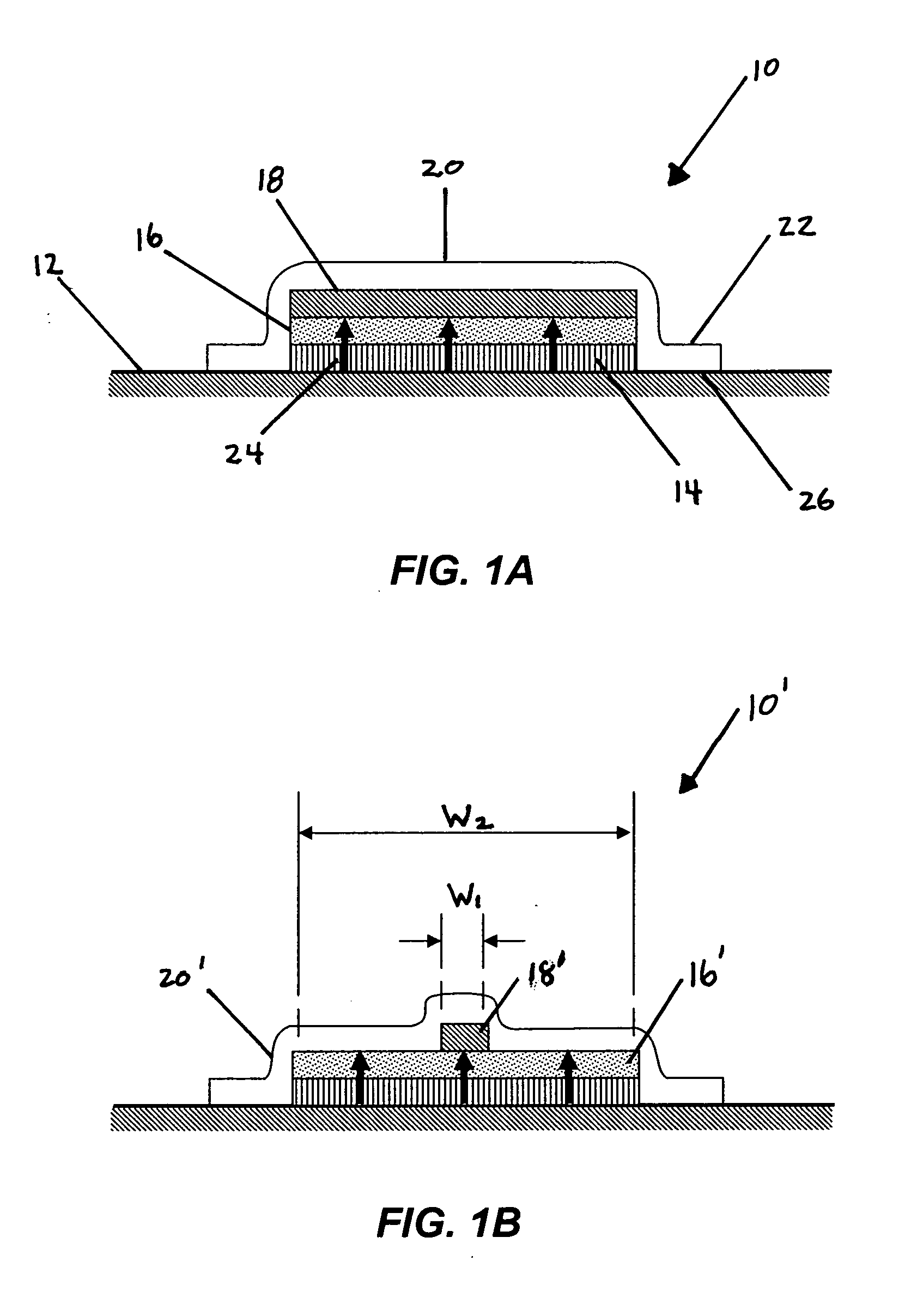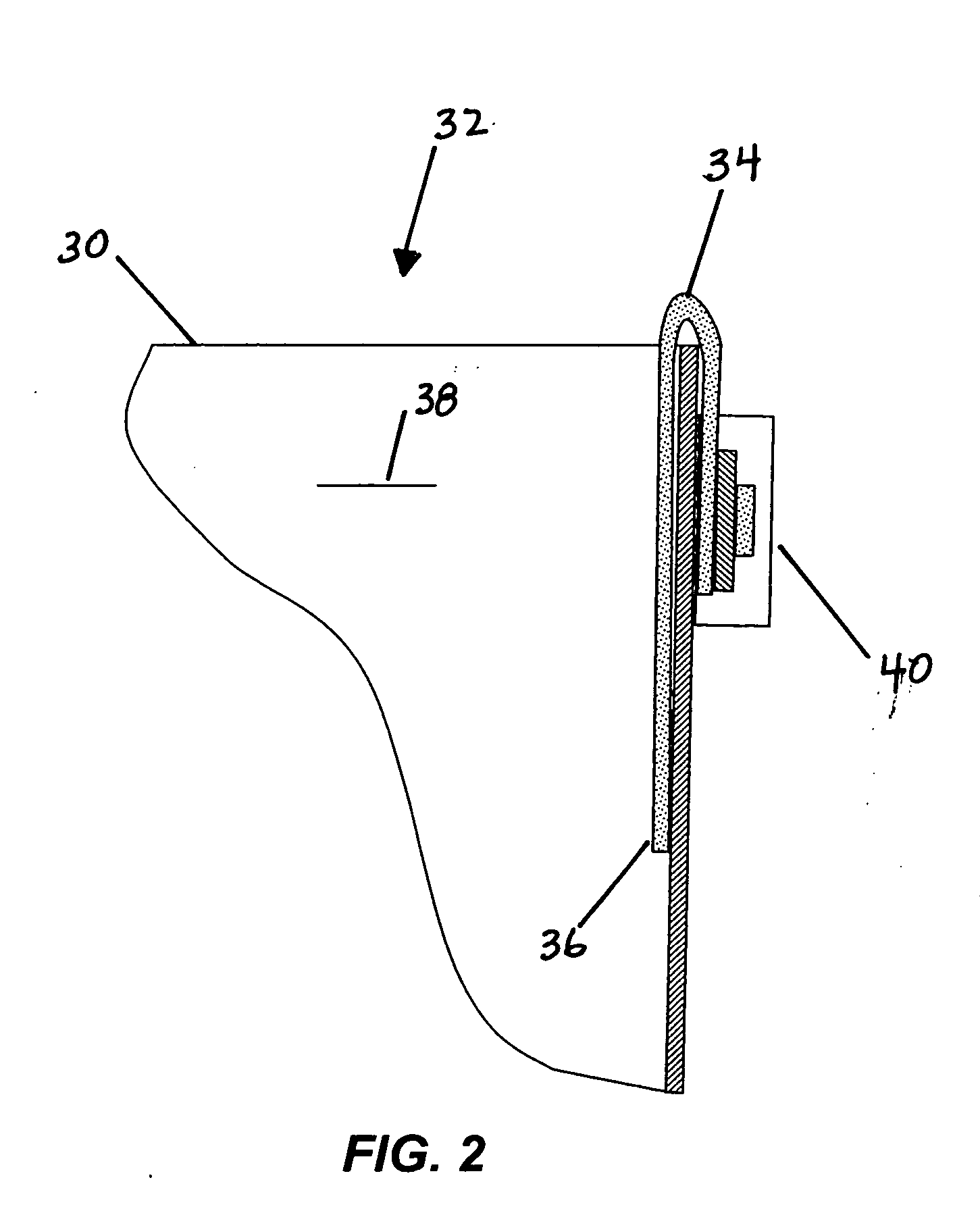Integrated patch and assay device with visual detection means
a technology of visual detection and patch, applied in the field of assay devices, can solve the problems of patch leakage, back diffusion problems, excessive wear time, etc., and achieve the effect of rapid analyte detection process
- Summary
- Abstract
- Description
- Claims
- Application Information
AI Technical Summary
Benefits of technology
Problems solved by technology
Method used
Image
Examples
example 1
[0060] Referring to FIG. 3A and FIG. 3B, a multilayered laminate 50 of acrylic, non-sensitizing, medical grade skin adhesive 50, are adhered to clear 2.0 mil thick occlusive layer 53 and 60# siliconized Kraft release liner paper 54. Each of the layers can be dye cut into a preferred size and shape, such as 2.5 cm diameter circles 56. A smaller, 1.5 cm circle of release line is removed from the center of the triple-layered laminate (not shown) exposing the underlying adhesive and leaving a 0.5 cm width peripheral ring of release paper intact 54. Suitable skin adhesives include HY-3 High MVTR, commercially available from Adhesives Research, Inc., Glen Rock, Pa. The occlusive layer 53 can be formed from polyethylene terephthalate (PET), commercially available from Polyester Converters, of Fullerton, Calif.
[0061] A method described in Trinder, P., Ann. Clin. Biochem. 6 (1969) 24, can be modified for colorimetric detection of glucose. Sheets of 0.45 micron polyester reinforced polysulfo...
example 2
[0065] Referring to FIG. 4A and FIG. 4B, a laminate of acrylic medical grade adhesive HY-3 High MVTR (commercially available form Adhesives Research, Inc., of Glen Rock, Pa.) is adhered to clear 2.0-mil thick polyethylene terephthalate (PET) (commercially available Polyester Converters, of Fullerton, Calif.) (shown herein as 70 and 60# siliconized Kraft release liner paper (not shown) can be cut into a 1.0 cm wide×7 cm long strip. A 1.0 mm wide×6.5 cm long×0.25 mm deep channel 72 can be thermoformed into the trilayer laminate by pressing the laminate into a heated aluminum mold containing a raised aluminum line of comparable size on one side and a corresponding depression of comparable size on the other. The release liner side of the laminate can be placed toward the raised side in order to create a microchannel 72 in the laminate surface raised away from the point of application.
[0066] Next a 0.15 mm air pinhole 74 is made in the laminate channel 72 at the top end, at the 6.0 cm p...
PUM
| Property | Measurement | Unit |
|---|---|---|
| pore diameter | aaaaa | aaaaa |
| pore size | aaaaa | aaaaa |
| pore size | aaaaa | aaaaa |
Abstract
Description
Claims
Application Information
 Login to View More
Login to View More - R&D
- Intellectual Property
- Life Sciences
- Materials
- Tech Scout
- Unparalleled Data Quality
- Higher Quality Content
- 60% Fewer Hallucinations
Browse by: Latest US Patents, China's latest patents, Technical Efficacy Thesaurus, Application Domain, Technology Topic, Popular Technical Reports.
© 2025 PatSnap. All rights reserved.Legal|Privacy policy|Modern Slavery Act Transparency Statement|Sitemap|About US| Contact US: help@patsnap.com



